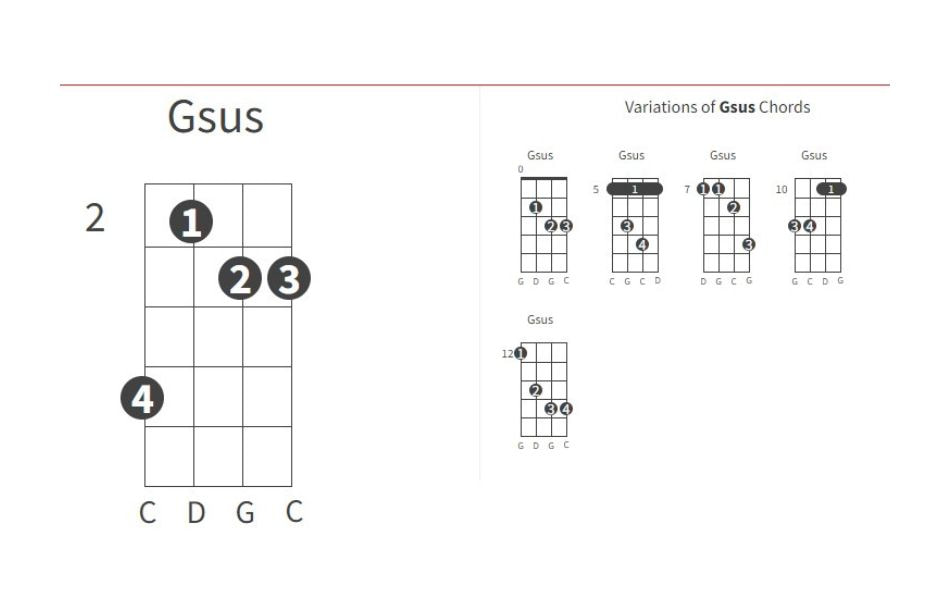How To Play Gsus ukulele Chord
Ready to add a touch of magic to your ukulele playing? Let's dive into mastering the Gsus chord. With its simple yet captivating sound, this chord is a must-have in your musical toolkit. Join me as we explore how to play the Gsus ukulele chord and unleash its charm on your music.
Introduction of Gsus ukulele chord
The Gsus2 chord on the ukulele can have several variations, depending on how you want to play and position your fingers. Among the variations of the Gsus2 chord on the ukulele, there are some common ones that players often use.
Gsus chord is often used when you want to create an open sound, harmonious with a gentle, easy-listening music vibe. Typically, Gsus is employed as a means to create continuity, anticipation, or excitement before transitioning to another chord.
Gsus is a basic chord and easy to play on instruments like the guitar and other stringed instruments such as the ukulele. This chord typically consists of just three notes: G, C, and D.
How to play Gsus ukulele chord
Below is a guide on how to play the Gsus ukulele chord. They are described through chord shapes where the finger position diagram is detailed. Here is the explanation for the symbols commonly found on ukulele chord diagrams:
- Dots or circles typically represent strings that are played open or left open.
- These are the strings you do not fret or touch when playing the chord.
- Numbers on each fret usually indicate which finger corresponds to the position on the string. For example, the number 1 may represent the thumb, 2 the index finger, 3 the middle finger, and 4 the ring finger.
- X marks on a string may indicate that the string is not played or needs to be muted carefully to avoid unwanted noise.
Some ways to play the chord

As you continue to refine your ukulele skills, may the Gsus chord serve as a steadfast companion on your musical journey. Keep playing, keep exploring, and most importantly, keep enjoying the wonderful world of ukulele music. Download the Ukulele Tuner app by Guitar Tunio now to ensure your sound is at the standard frequency. This will help you achieve a livelier music experience








